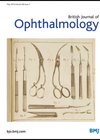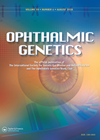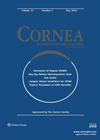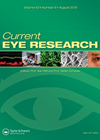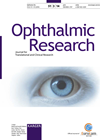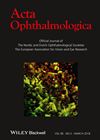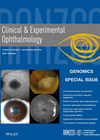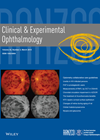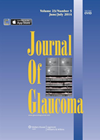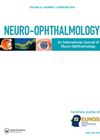
Journal Reviews archive for August 2014
Secondary iris-claw anterior chamber lens implantation in patients with aphakia without capsular support
This retrospective, non-randomised, non-comparative, interventional study including 128 eyes of 124 patients that presented with aphakia with no capsular support. All patients consecutively underwent Artisan iris-claw intraocular lense (IOL) implantation between 1997 and 2010. The inclusion criteria were: aphakic without...
Differences of the anterior segment parameters in children with Down syndrome
This cross-sectional study was designed in order to demonstrate the differences in anterior segment parameters in children with trisomy 21. This is important as it may impact on surgical planning when undertaking procedures in the anterior segment such as corneal...
Outcomes of corneal collagen crosslinking (CXL) in pseudophakic bullous keratopathy (PBK)
This was a retrospective non-comparative, interventional case series of 50 eyes in 50 patients with symptomatic PBK who underwent CXL (epithelium-off). Central corneal thickness (CCT), pain score, best corrected visual acuity (BCVA), and corneal transparency were recorded at baseline; at...
Topography based keratoconus progression after corneal collagen cross-linking
Case 1 describes a 35-year-old man with progressive keratoconus (PK). His best corrected visual acuity (BCVA) was right 20/80 (-5.25/-7.75 x 85) and left 20/20 (+4.75/-5.00 x 90). His Ks were right 36.32/48.02 D and 41.15/46.41 D. Right central cornea...
Pterygium ocular surface temperature
This prospective study investigated the ocular surface temperature in patients with pterygia compared to those with dry and healthy eyes respectively. Previous studies have shown that patients with dry eyes show a significant decrease in ocular surface temperature on sustained...
Allergic conjunctivitis evaluation by thermography
Thermography is a non-invasive imaging technique, which uses infrared radiation reflected from an object to estimate the temperature of the object. This paper evaluates the use of thermography to assess allergic conjunctivitis objectively, by using an instrument called ocular surface...
Effect of single intravitreal injection of bevacizumab on contrast sensitivity in patients with central retinal vein occlusion
Central retinal vein occlusion is the second most common retinal vascular disorder after diabetic retinopathy. There are many studies reporting the efficacy of intravitreal anti-VEGF injections for macular oedema secondary to retinal vein occlusions. This paper looks at the contrast...
Effects of topical anaesthetic on intraocular pressure
This prospective interventional study assessed the effects of repeated intraocular pressure (IOP) using Goldmann applanation tonometry and applanation resonance tonometry in six volunteers. Previous literature supports IOP reduction using repeated applanation tonometry. Repeated IOP measures were taken alternately on 12...
A review of chromosome 9p21 POAG susceptibility locus
Primary open angle glaucoma (POAG) is a genetically complex disease and the overall phenotype is influenced by multiple traits including intraocular pressure (IOP), central corneal thickness and structural features of the optic nerve head. Therefore, genes affecting any of these...
Prostaglandin associated periorbitopathy
Prostaglandins are known to cause periorbital adverse effects. The aim of this retrospective case series was to compare the frequency of prostaglandin associated periorbitopathy (PAP) between bimatoprost, latanoprost and travoprost users. Five PAP findings were evaluated: upper lid ptosis, deepening...
Sleep positions and the effect on IOP
The authors describe a study to determine if sleeping at a 20 degree head up position decreases nocturnal IOP compared with lying supine in patients with and without glaucoma. They recruited 30 patients (60 eyes) 15 with glaucoma and 15...
A case report of Horner syndrome with neuromyelitis optica
This case report details a patient diagnosed with neuromyelitis optica (NMO) with an associated left Horner syndrome. The female patient presented with neck pain and right hemibody decreased pain and temperature sensation. She then went on to develop left ptosis...

